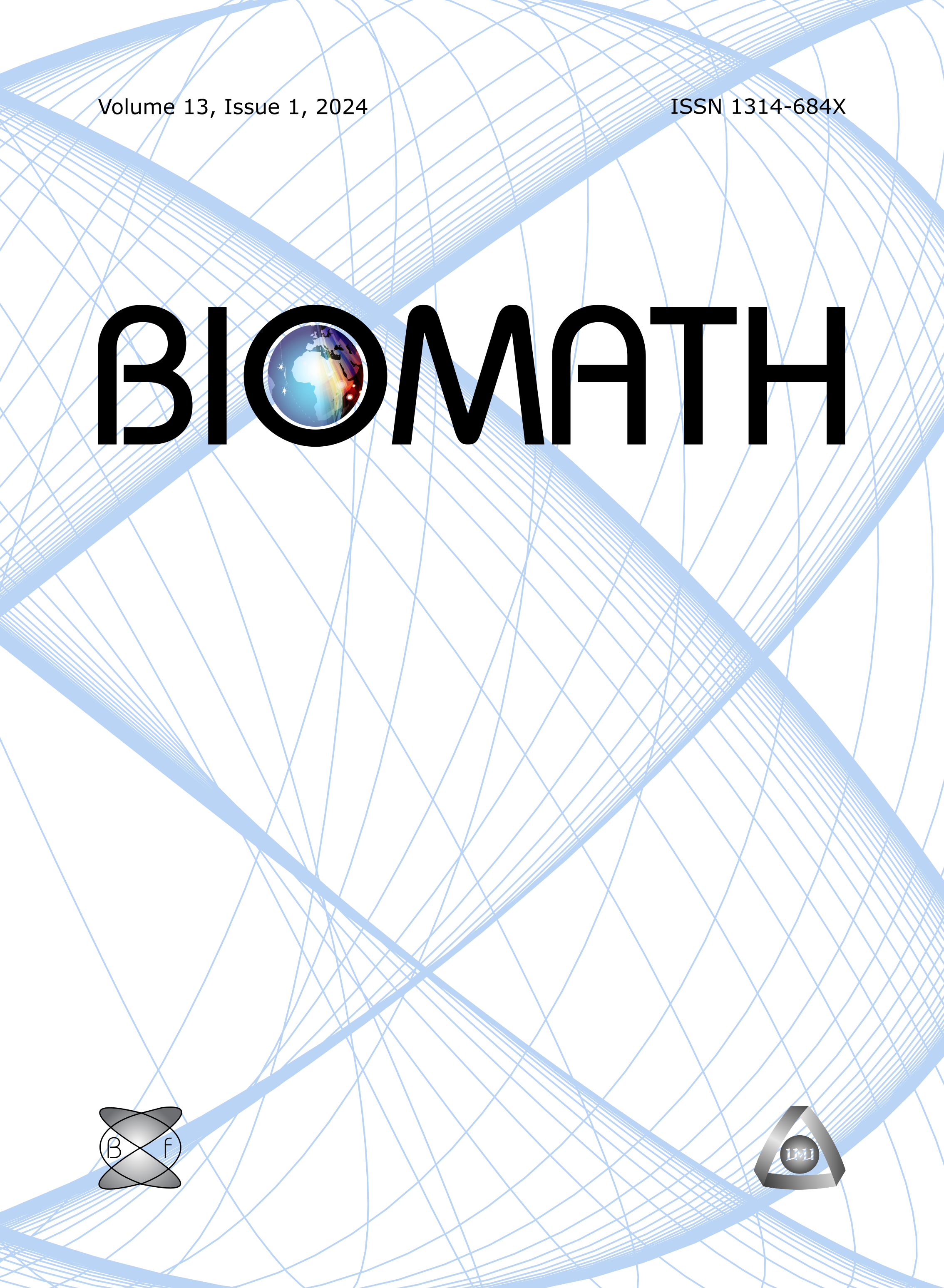Accounting for multi-delay effects in an HIV-1 infection model with saturated infection rate, recovery and proliferation of host cells
DOI:
https://doi.org/10.11145/j.biomath.2020.12.297Keywords:
HIV model, saturated incidence, self-proliferation, recovery, multiple delays, stability, bifurcationAbstract
Biological models inherently contain delay. Mathematical analysis of a delay-induced model is, however, more difficult compare to its non-delayed counterpart. Difficulties multiply if the model contains multiple delays. In this paper, we analyze a realistic HIV-1 infection model in the presence and absence of multiple delays. We consider self-proliferation of CD4+T cells, nonlinear saturated infection rate and recovery of infected cells due to incomplete reverse transcription in a basic HIV-1 in-host model and incorporate multiple delays to account for successful viral entry and subsequent virus reproduction from the infected cell. Both of delayed and non-delayed system becomes disease-free if the basic reproduction number is less than unity. In the absence of delays, the infected equilibrium is shown to be locally asymptotically stable under some parametric space and unstable otherwise. The system may show unstable oscillatory behaviour in the presence of either delay even when the non-delayed system is stable. The second delay further enhances the instability of the endemic equilibrium which is otherwise stable in the presence of a single delay. Numerical results are shown to be in agreement with the analytical results and reflect quite realistic dynamics observed in HIV-1 infected individuals.
Downloads
Published
Issue
Section
License
The journal Biomath is an open access journal. All published articles are immeditely available online and the respective DOI link activated. All articles can be access for free and no reader registration of any sort is required. No fees are charged to authors for article submission or processing. Online publications are funded through volunteer work, donations and grants.
Authors who publish with this journal agree to the following terms:
- Authors retain copyright and grant the journal right of first publication with the work simultaneously licensed under a Creative Commons Attribution License 4.0 that allows others to share the work with an acknowledgement of the work's authorship and initial publication in this journal.
- Authors are able to enter into separate, additional contractual arrangements for the non-exclusive distribution of the journal's published version of the work (e.g., post it to an institutional repository or publish it in a book), with an acknowledgement of its initial publication in this journal.
- Authors are permitted and encouraged to post their work online (e.g., in institutional repositories or on their website) prior to and during the submission process, as it can lead to productive exchanges, as well as earlier and greater citation of published work (See The Effect of Open Access).

